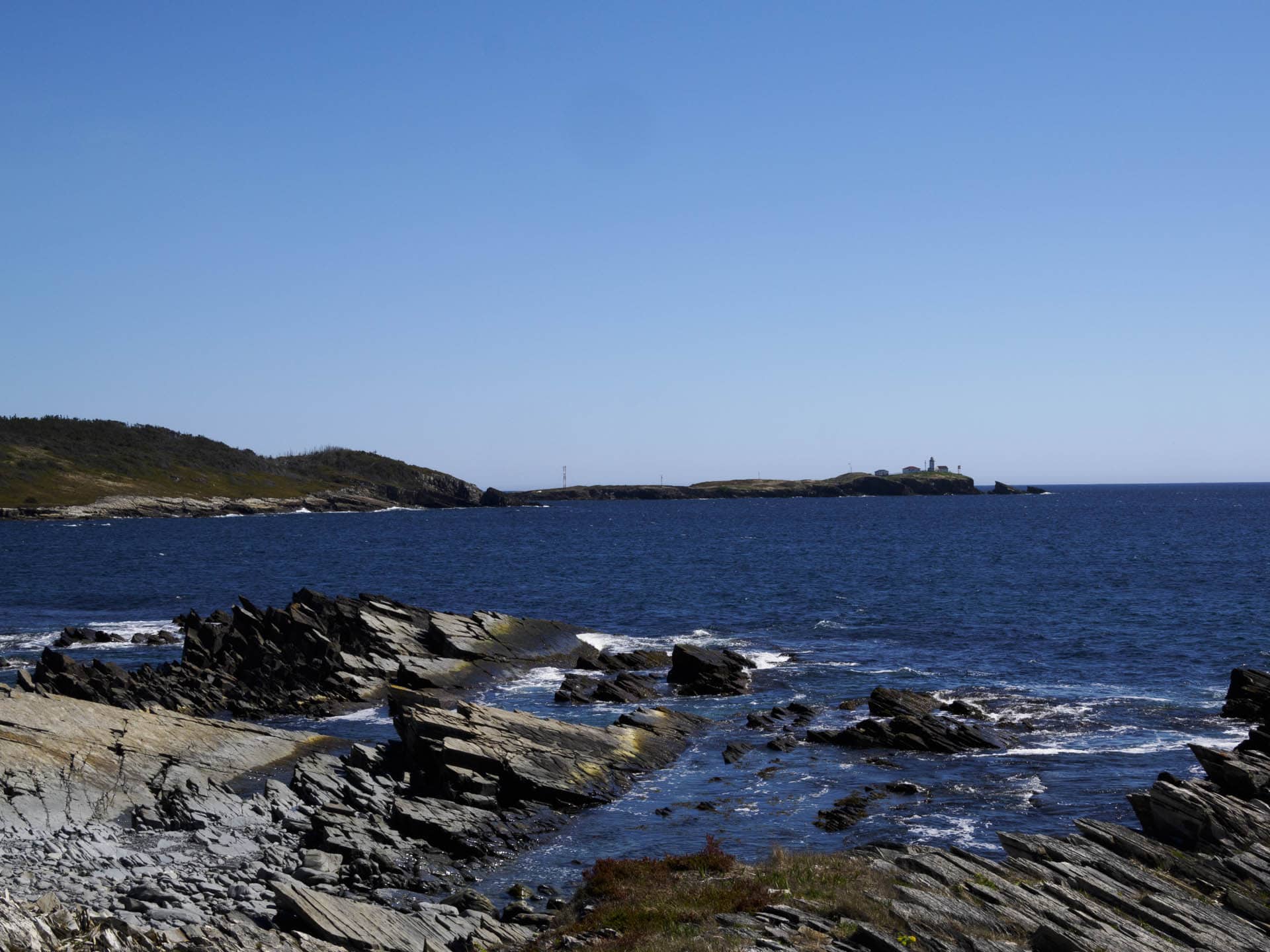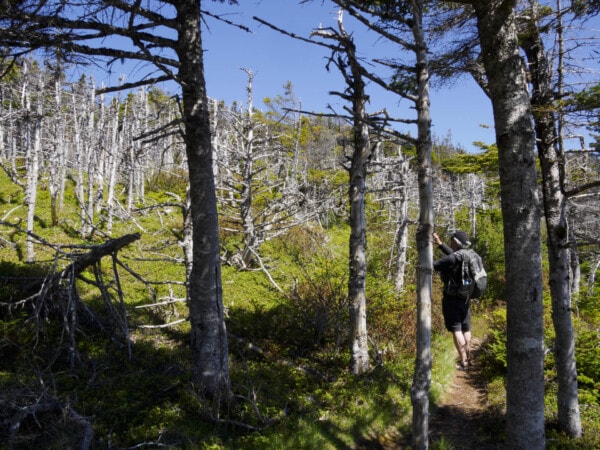On a trail near Back Cove on the Bonavista Peninsula in Newfoundland late on a summer afternoon in 2008, Jack Matthews and Alex Lui showed the fossils they’d been documenting to their supervisor, Dr. Martin Brasier, a 61-year-old paleontologist from Oxford. Martin wandered off a bit, attracted to an outcrop. On which he discovered one of the most exquisitely preserved fossils in the world, a muscle-bearing relative of the jellyfish—the oldest evidence of an animal ever found—a creature that thrived in the Ediacaran period, 560 million years ago.
Did Martin shout out in excitement about this heart-stopping find? Or did he quietly say, “Hey guys, come have a look at this”?
Exciting as it was for us to see Haootia quadriformis on the third floor in The Rooms Museum in St. John’s where it now resides, it was far more exciting hiking near the spot where Martin discovered it, where many times Magellan and I shouted to each other, “Hey, come look at this fossil!”
Haootia (pronounced hay-you-te-ah), ten centimetres tall with four tentacles, has been described in lay terms as a wrinkly M, a multiform and a flattened bat. But we prefer Jack’s analogy:
Picture a jellyfish the size and shape of a small wineglass. It has a stem, which is similar to the stem of a glass, and then a bowl at the top. And that bowl is a sheet of muscle.
The trail, a 7.7 km coastal loop, is one of ten hikes in the Discovery UNESCO Global Geopark, its tagline “Half a billion years in the making.” Called Port Union-Murphy’s Cove to Lodge’s Pond—Haootia, you can find the trail—and we heartily suggest you do if you’re on the Bonavista Peninsula—under shorter names like Port Union Hike, Lodge’s Pond Trail or Murphy’s Cove Loop.
We probably saw the same fossils that Jack and Alex documented, abundantly average specimens named for their homely resemblance to cabbages (Bradgatia), fronds (Aspidella and Charniodiscus) and pizzas (Ivesheadiamorph), though it mattered little to our joy of discovery.
Wanting to give the newly discovered fossil a name that honoured the Beothuk language, Martin and a fellow Oxford paleontologist, Dr. Jonathan Antcliffe, originally called it Beothukis. However, descriptors for the fossil’s anatomical features in the Beothuk language were too multisyllabic and difficult to pronounce so they changed its name to Haootia, from the Beothuk word Haoot (“demon”). The Ediacaran age was named after the garden of Eden, “because there was no predation going on yet there,” says Don Johnson, a former park ranger on the Bonavista Peninsula. “The Aspidella is lying down with the Charniodiscus, and everything is in peace. Now you’ve got the devil there and he’s moving around, and he’s going to start eating things. Nothing is going to be the same.
From impressions in the rock, scientists believe Haootia lived a few centimetres above the sea floor of an ancient ocean, flexing its muscular tentacles to grab plankton and pop the nutrient-rich particles into its cavernous mouth.
Besides the many fossils on this hiking trail, the scenery, with its multiple headlands overlooking the Atlantic, is eye-popping.
Rated moderate, though not too hard on the heart or lungs, the hike goes through the Port Union National Historic District of Canada, the only union-built town in North America.
Quaint ochre-red buildings line the town’s seaside, buildings that used to be a salt-fish processing store, an icehouse, a seal-oil plant, a soft-drink manufacturing place, a machine shop, a hotel, a bakery and a theatre—one is now a nice gift shop that we stopped into.
Established by the social-justice advocate William Coaker, in the 1950s the town was the largest exporter of dried cod on the east coast. The Fishermans Union Premises and William Coaker’s former home are now a historical museum, which we didn’t see, having spent so much time enjoying the hike that our bellies were sending empty signals to get back to our motorhome, there being nowhere open to eat in town.
Martin died in 2014 so I couldn’t email him to ask how he felt when he made this incredible discovery. But Jack, now Dr. Jack Matthews at Oxford, responded to my question in less than a day:
He (Martin) stepped down onto the surface, sat down, turned to his side and said, ‘Well, what’s this?’
The article Jack linked me to has another muscle-flexing aspect to this story—one from the heart. Martin, known as a kindly professor who treated his students well, “graciously shared this major find” with Jack and Alex.
Navigation
Discovery UNESCO Global Geopark Magellan and I picked up their excellent map of this Geopark on the upper half of the Bonavista Peninsula. One of only five Geoparks in Canada, it covers 1150 sq km, spans over 280 km of rugged coastlines and landscapes, and includes 27 towns and communities. Truly a Newfoundland jewel—I loved this area so much that checking for real estate occupied a few days of my time when we arrived home until “Oh those winters!” tore a wide streak of reality through my dreams.
Matthews, Jack. “How Do You Save a Fossil Like Haootia?” Traveling Geologist. December, 2014.
Lui, Alex. “Animals first flex their muscles A new fossil discovery identifies the earliest evidence for animals with muscles.” University of Cambridge. August 27, 2014.
O’Neill-Yates, Chris. “N.L. fossils star in Oxford University exhibit documenting Earth’s earliest animal life.” CBC, July 22, 2019.
Quinton, Luke. “A fossil flexes its muscle in Newfoundland, but it can’t keep thieves away.” The World. January 30, 2015.























2 Responses
You ask the BEST questions! What a Brilliant idea to track these guys down to find out what “the moment” of discovery was actually like! Love that!!
And like the good professor he probably is, he didn’t tell me–he linked me to an article that did.